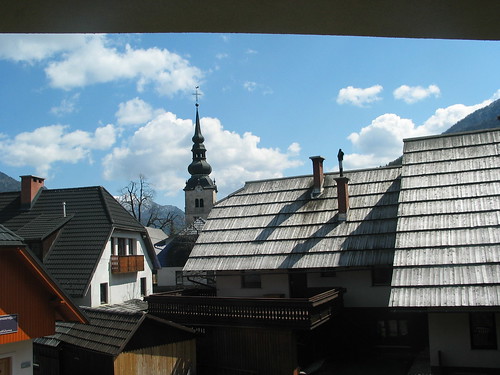It was wonderful to meet friends from the national Collaborative projects online community and hear examples of good practice shared by fellow teachers. Two dear colleagues of mine – Tatjana and Lorena are this year's well deserved winners of the national eTwinning Golden Cable award. Way to go!
After the early Saturday morning plenary I attended a most refreshing workshop led by Tim Rylands and an always useful one – How to make a good presentation by Dr. John Collick.
Tim and his partner-in-crime Sarah lit up our minds and hearts with their humour, passion, creativity and team spirit. They took the 20 and something lucky participants to a refreshing journey in the iPad wonderland – a most appreciated reminder of how invigorating it is to relax and let your imagination roam free and of how this can work fabulously constructively in a group context such as a class. We had a walk through a medieval town where I got a new husband and son, we created some weird sounding music, made and baked some pottery and carved a watermelon among other things.
Some presenting tips by Dr. Collick - in addition to those classical ones about not turning the ppt into a karaoke exercise by reading out loud, about theimportance of using only keywords on slides and of quality visual support and, of course, of practice, I found interesting the following exercises for voice and posture:
- 20 sec mouth stretching before giving a presentation
- A breathing exercise involving slowly inhaling and exhaling air with your hands spreading out and closing back in thus shaping an imaginary ball – from a tennis size one to a volleyball one. This should be done 3 times as slowly as possible without fainting.
- Step with your feet reflecting your shoulder length, turn your shoulders backwards and straighten up your head as if trying to touch with its top an imaginary thread hanging down the ceiling.
Another interesting piece of info new to me was the fact, that our brain reboots every 10 mins or so. That's why it makes sense to include breaks in presentations. And that we can generally only remember 3 things. So it makes sense to put no more than 3 points on our slides, if possible using no less than 6 words.
In the afternoon my 3 boys and I climbed up the way-too-many-to-count stairs to the top of the Planica jumping hill – a lovely and most useful after-conference exercise. ;-)

...which rewarded us with a spine-chilling view downwards.


